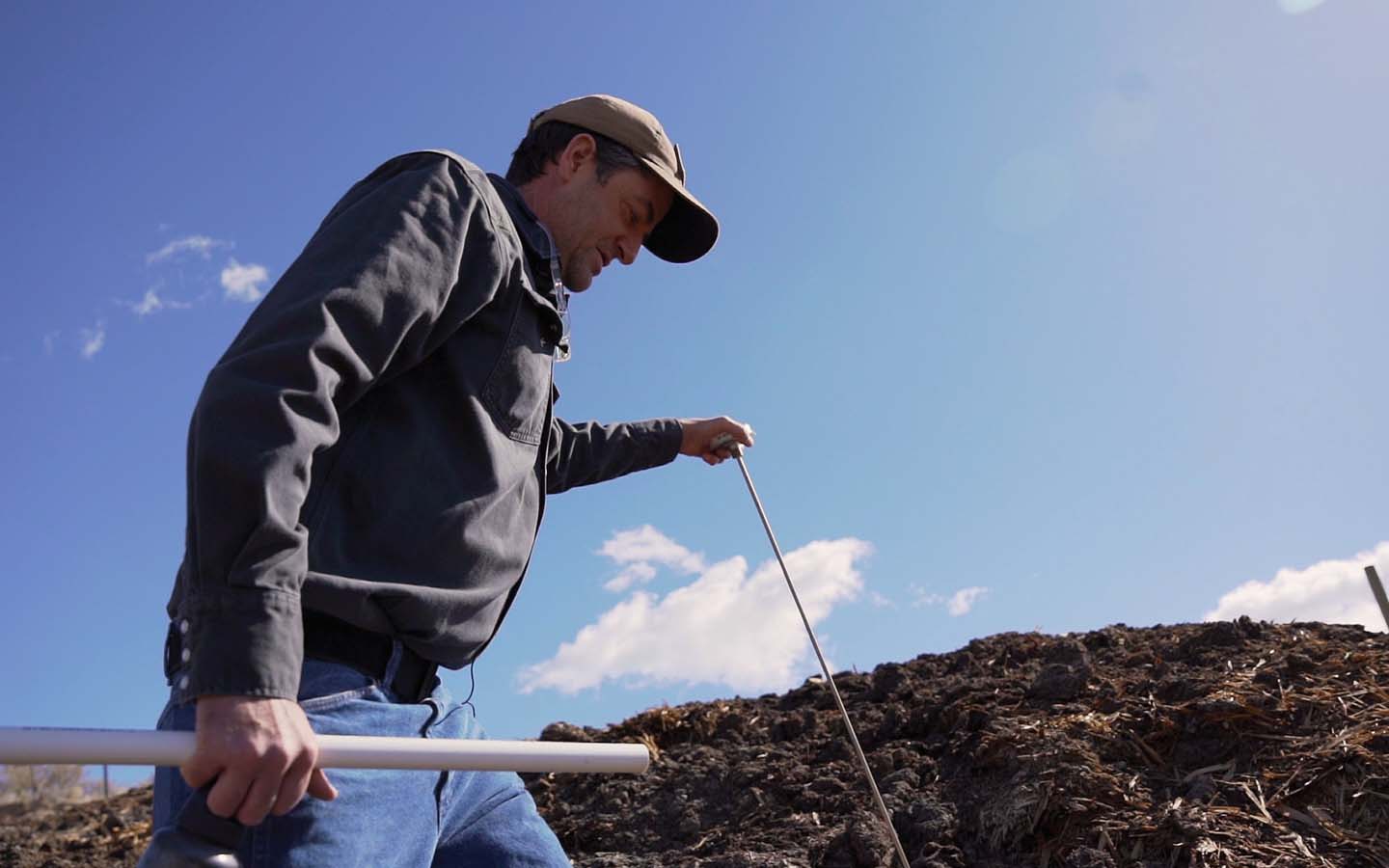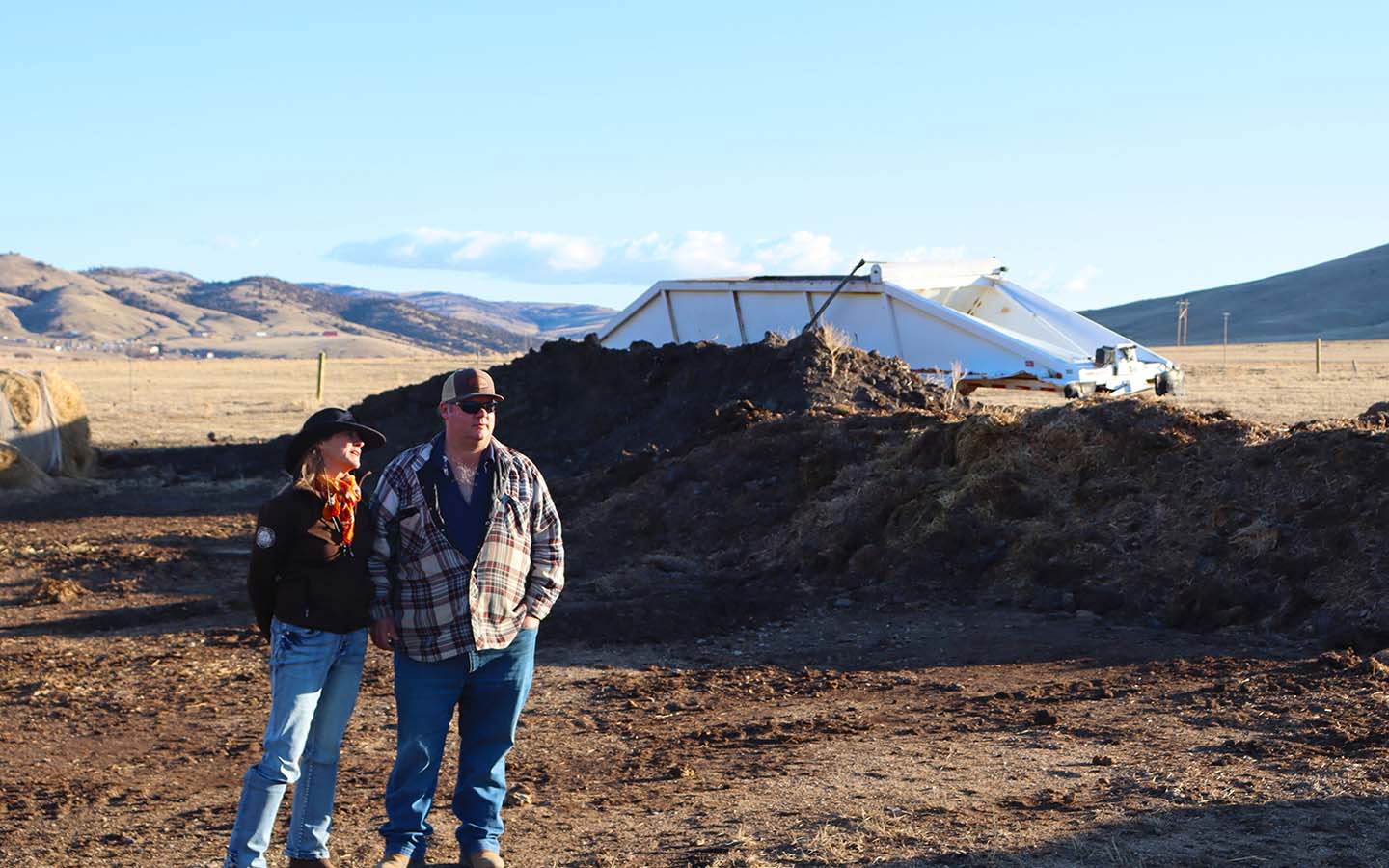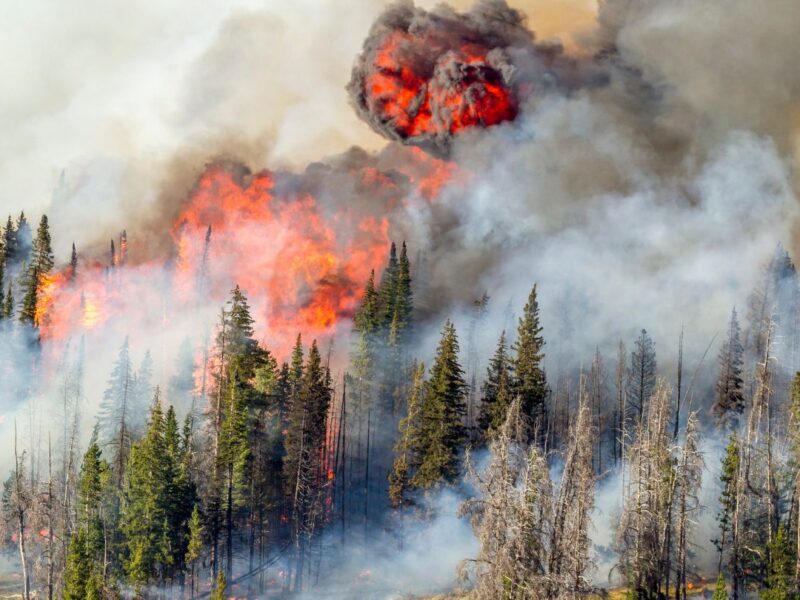Composting a recipe for conflict reduction
Above: Linda Owens, project director for the Madison Valley Ranchlands Group, and Matt Moen, owner of the Bar MZ Ranch, stand in front of a manure pile at the Madison Valley carcass composting site on the Bar MZ. Owens picks up carcasses from area ranchers for free, and coordinates drop-offs with Moen, who buries them in manure and wood chips or straw to kick-start the composting process.
Carcass Compost Recipe
- Place carcass in designated site.
- Cover loosely with soil, manure and straw.
- Moisten regularly.
- Wait 30-120 days.
This is a simple recipe that is spreading from community to community in the Northern Rockies, just ahead of growing grizzly bear populations. It’s called carcass composting, and it’s another tool in the expanding tool kits of ranchers and wildlife managers looking to prevent conflict between people and wildlife.
Every ranch, no matter the quality of the husbandry, loses some animals to disease, injury, predation or the Northern Rockies’ fierce weather. With carcass composting, these rotting bear magnets are consolidated into a single bear-proofed facility where, through the magic of microorganisms, they become the stuff of healthy soil. What’s not to love?
For some people, however, the idea takes some getting used to. “The less people know about it, the more likely they are to oppose carcass composting,” says Linda Owens, who spent seven years getting the Madison Valley Ranchlands Group’s carcass composting program started. The biggest challenge was finding a site for the compost pile. When Matt Moen, owner of the Bar MZ Ranch south of Norris, Montana, finally offered to lease the program 20 acres in 2018, and manage the site, Owens was overjoyed. “It was on private ground, which made it so we didn’t have to go to the public hearing process. We just had to have [the Montana Department of Environmental Quality] and the County Health Board approve it.”
But the Health Board had concerns. “Everyone was worried it would stink,” said Owens. “They thought there’d be lots of scavengers and were worried the birds would carry diseases around town, I guess,” said Steve Primm, a wildlife biologist who supported the project with research and design help. On Land visited with Primm at the newer Ruby Valley carcass composting site, which is on land adjacent to the Sheridan, Montana, waste transfer site. Primm gestured to the clear blue sky over the year-old compost pile and asked, rhetorically, “Do you see any birds? They can’t see anything that looks like food. So they don’t come here and hang out.”

Biologist Steve Primm takes the temperature of the carcass compost pile near Sheridan, Montana, on a blustery spring day. Temperatures in excess of 130°F break down any diseases that livestock may carry, creating clean compost that makes excellent fertilizer. Site manager Billy Flynn says, “I’d take it right to my house. I think it’s going to be a really great product. And cheap.”
The compost pile is a far cry from the boneyards the Health Board must have had in mind. There, large and small scavengers digest most of a carcass before the microbes can get to work. But a well-tended compost pile is something else entirely. The carcass is covered with manure and straw, and surrounded by an electric fence to keep the larger digesters away, and so “You start getting microbial activity in the pile,” explained Primm. That process generates a surprising amount of heat: enough to keep the pile at around 130 degrees Fahrenheit through the Montana winter. “When you’re achieving those higher temperatures, you’re also killing a lot of potential pathogens, such as brucellosis, for instance, which doesn’t really survive temperatures much over 130 degrees for a prolonged period of time,” Primm said.
The program is growing in popularity. Ranchers like it for the peace of mind and the message it sends: We’re doing everything we can. Biologists like it because it keeps the bears and wolves focused on eating what they should, not developing a taste for what they shouldn’t. And the town folk of Sheridan? Well, they don’t know much about it. The site manager, Billy Flynn, gestures to a grand two-story home perched on a ridge about 100 yards from the compost pile: “The banker lives right there. And I was asking the kid who works for the city, I said, ‘You ever talk to Cleve? What’s he say about that?’ He said, ‘They don’t even know what’s there. Never smell it.’”





